Best Time to Visit Portugal: A Season by Season Guide
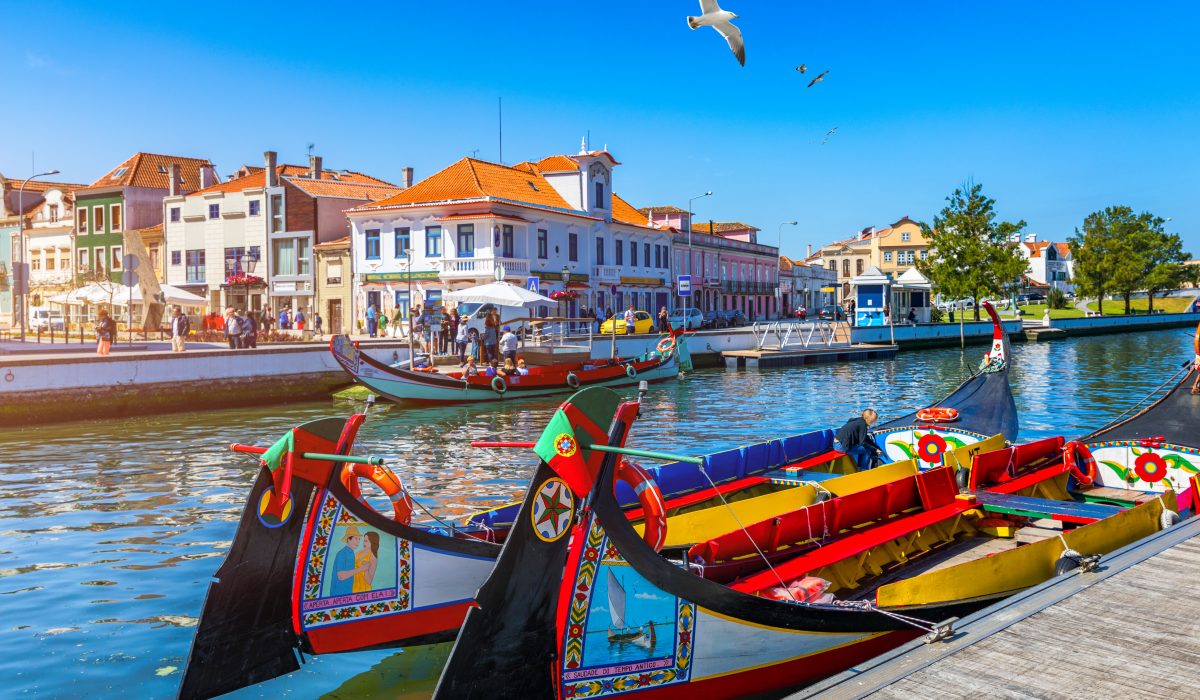
For many travelers, this southern European country is a dream destination. However, before you book your flight, ask yourself, “when is the best time to visit Portugal?” After all, it’s rather important to plan your trip around the weather in Portugal, list activities, and even plan your outfits to match the season!
The best times to visit Portugal are during the shoulder seasons from late April to early June and from September to mid-October. This is when the weather is mild and travel expenses are low. However, visit between June and August if you’re looking to sunbathe on some of the best beaches in the world. Meanwhile, the pleasant winter months welcome those looking for a bit warmer destinations and escape cold and snowy winters.
Here’s an in-depth guide on the best time to go to Portugal, with fun activities to enjoy during each season.
Best Time To Visit Portugal
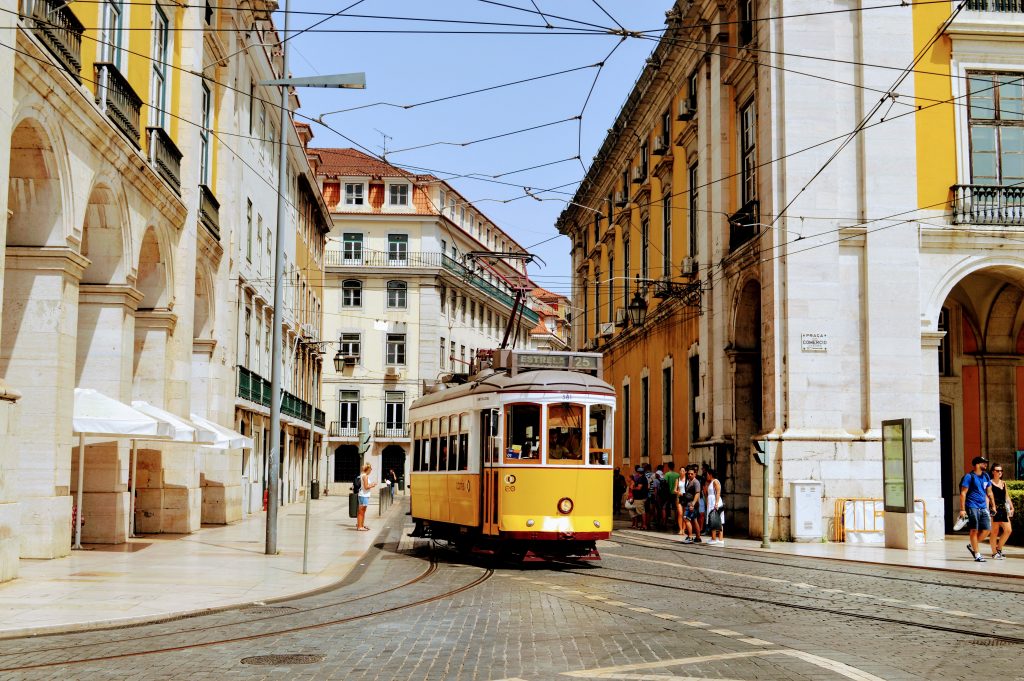
Photo by Aayush Gupta on Unsplash
The best time to travel to Portugal depends on your purpose of travel. January and February months witnesses vibrant costumes and elaborate parades as the country celebrates its annual carnival. Meanwhile, late March through May sees fewer crowds and therefore the best deals on hotel accommodations.
The months of June through August bring warmth and sunshine that entices sunseekers to visit the pristine beaches in Portugal. Visit between September and October if you plan to explore the inland areas for some breathtaking views both on top of Torre Mountain or within the historic village of Piódão. November and December experience rain and cold temperatures, but you’ll be able to join festivities as cities in Portugal prepare for the holidays.
For Beach and Water Activities
Portugal has some of the best beaches in the world. If you’re looking for a fabulous tan, then the best time to go to the beach is during the summer months of July and August. Some of the most beautiful sun-kissed beaches not to miss are Praia do Guincho and Praia do Carvalhal.
Meanwhile, if you want to enjoy the diving and snorkeling scene in Azores and Madeira, the best months to do so are between April and October. These are the months when the waters are calmer and highly visible. Because of the particular Portugal October weather and the fact that it is surrounded by islands, visiting the Azores indicates higher chances of pelagic encounters. For surfers out there, December to March bring epic waves for you to catch.
For Great Weather
If you plan to enjoy outdoor activities, it’s best to plan your trip around late spring. This season offers great weather, with warm temperatures and clear skies. Fall is also another great time to visit since the weather is not too hot or cold, with balmy days and cool nights.
It’s still important, though, to keep in mind that the weather in Portugal differs per region. Areas in Northern Portugal like Costa Verde experience cool and rainy weather. And the farther south you travel, the warmer and sunnier the weather becomes.
Central Portugal, particularly in Lisbon and Coimbra, sees a mixture of cool and warm weather depending on the season. The central regions of the countries experience a combination of Mediterranean and Atlantic climates. As such, these parts see extremely hot and dry summers, but they are also the only places where you can experience the occasional snowfall. With these in mind, the best time to visit Portugal is based on your preference for the weather and your itinerary.
For Sightseeing
The spring months between late March to May are the perfect time for sightseeing. These are the months when the country is in bloom once again. Head over to the Algarve and Alentejo for some of the most enchanting displays of wildflowers. Another season that’s ideal for exploring the natural wonders of Portugal is during autumn. Hiking is a popular activity during this season since the sun is still shining but the temperatures are milder. Try hiking at Rota Vicentina where you can experience a coastal walk or an inland trail, with stunning sceneries at every turn.
For the Budget Conscious
Compared to other travel destinations in southern Europe, Portugal is among the most affordable travel destinations. However, if you’re looking to stretch your dollars, the best time to visit Portugal is during winter, spring, or autumn.
The Portugal winter ushers the beginning of the rainy season. The holiday season does see a spike in prices thanks to the swarm of people visiting for Christmas and New Year. Once the holiday festivities die down, prices drop and become more affordable.
More resorts start to open their doors during spring, but visitors are still few and prices are average. Meanwhile, the fall season still sees warmer temperatures perfect for beach days but has fewer tourists than summer. The thinner crowds during this time also make it the best time to visit Lisbon and other usually crowded cities.
For Shopping
Cities like Lisbon and Porto are emerging shopping meccas for locals and tourists alike. Get the best deals on Portuguese fashion, accessories, decorative items, and more, by visiting during the summer and winter.
These two seasons are the best times to shop in Portugal since department stores and artisan shops typically host clearance sales around these times. Just note that if you’re planning to add retail therapy to your list of things to do in Porto and Lisbon, these sales also attract massive crowds. On top of that, the weather in Porto, Portugal during summer sales can get hot, though not unbearable.
Weather in Portugal by Season
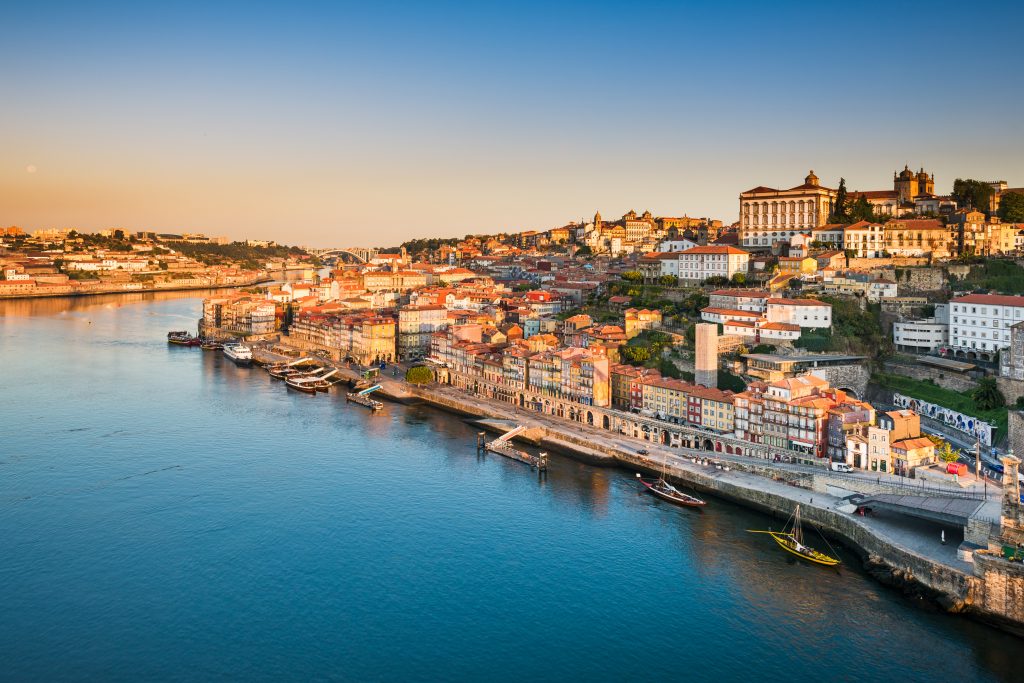
Photo by Mapics on Adobe Stock
The average temperature in Portugal will depend on the region and area you are in. Generally, the Portugal climate is temperate all year round, though the weather varies from region to region. This means hot and dry summers, warm springs and fall months, and mild winters. Nevertheless, to get a better understanding of these various microclimates, let’s take a more in-depth look at the Portugal weather by month and season.
Spring in Portugal
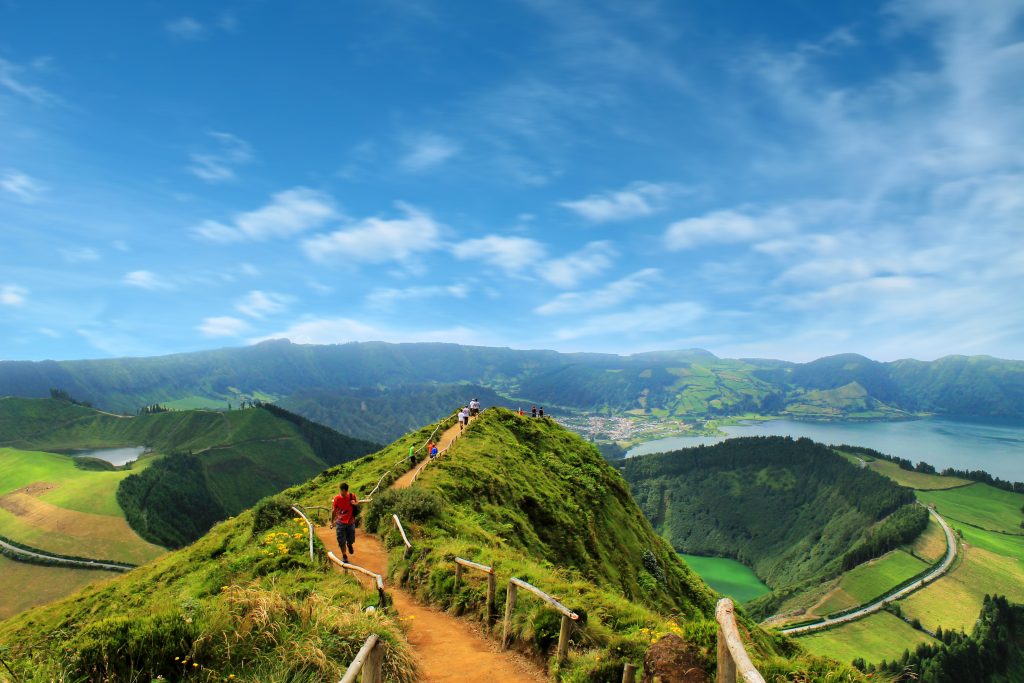
Photo by Lsantilli on Adobe Stock
Spring in the country typically starts in late March. This is usually accompanied by rainy and chilly weather with an average low of 11 degrees and a high of 18 degrees Celsius, depending on which region or city you’re visiting. Areas in Northern Portugal see more rain and milder temperatures. Meanwhile, Portugal’s southern coasts, including the Algarve, experience warm weather with minimal rainfall. The Portugal climate warms up slightly in April, varying between 12 to 20 degrees. Rain is still expected during this month, though you will see more dry days. The temperature goes up to an average of 22 degrees in May. The rainfall also subsides significantly, with more sunny days in the month.
Festivals and Things to do in Spring
Notwithstanding the rain, spring is the best time to visit Portugal for outdoor activities because of its mild temperature. The weather in Algarve is still a bit too cold for swimming, but it’s the perfect time to relax by the shore. The weather in Faro, Portugal during spring allows you to admire the town’s historic streets and landmarks without breaking a sweat. Moreover, the balmy weather also makes it one of the best times to explore the vineyards and mountains of Douro Valley. Wildlife enthusiasts will love visiting the Azores where they can swim side by side with whales and dolphins, or admire the sight of migratory birds flocking the area. Festivals in the country during spring are as follows:
Porto Interceltic Festival — A ten-day celebration of Celtic folk music in late March.
Semana Santa — As a highly religious country, Portugal celebrates the Holy Week during mid-April.
International Chocolate Festival — A four-day event in late April held in the walled town of Óbidos wherein pastry chefs and chocolatiers showcase their cakes and sweets for tourists and locals to try and purchase.
Fatima Pilgrimage — Locals commemorate the anniversary of when three shepherd children allegedly saw an apparition of the Virgin Mary in the town Fatima back on May 13, 1917.
Summer in Portugal
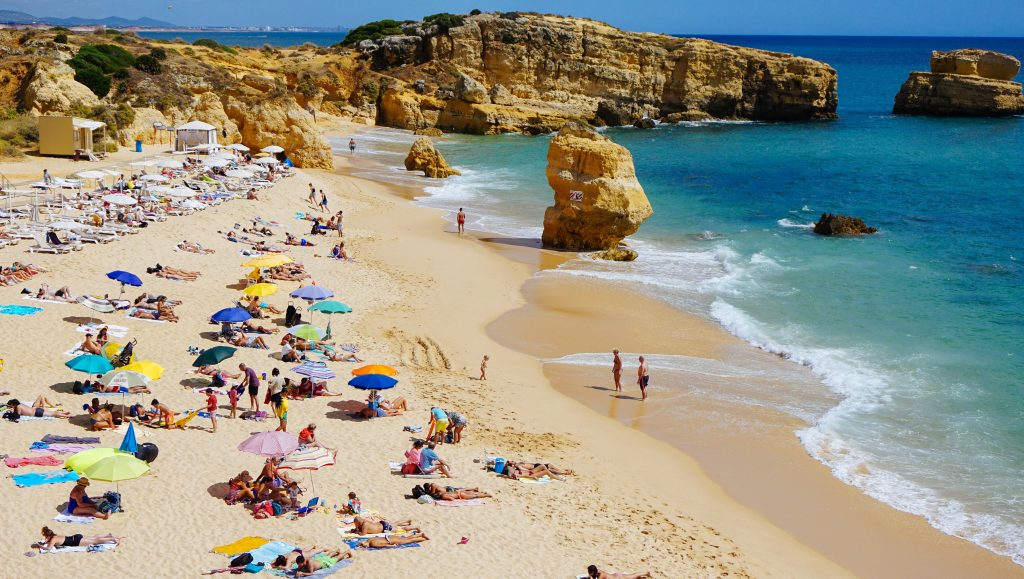
Photo by Dan Gold on Unsplash
Summer brings endless sunshine to Portugal making it an excellent season to explore the best Portugal beaches. The rains will cease in June, with temperatures rising to a warm average of 25 degrees. Brace yourself for extremely dry and warm weather. The months of July and August experience a high of 28 degrees, especially if you’re staying in northern cities like Braga and Viana de Castelo. Tourists in the country’s capital should also prepare for the intense Lisbon weather during these two months. The hot weather continues all the way to September, just cooling off slightly towards the end of the month, accompanied by an increase in the likelihood of rain.
Festivals and Things to do in Summer
Summer is probably the best time to visit Portugal for beach lovers. The perfect season for beach trips and water activities, take a dip in the cool waters or sunbathe under the hot sun. River tours are among the top things to do in the country during the summer months, as well. You can enjoy the stunning scenery along the Douro River while sampling some of the finest Portuguese wine. The Algarve, Portugal weather during the late summer season is also ideal for indulging in the area’s nightlife, especially along the strip of open-air nightclubs and bars in Albufeira. You can also experience several lively festivals across the country in the summer:
Popular Saints Festivals — During June, the country celebrates popular saints with processions, street parties, and parades. While there are many patronal festivals, the two main ones are Festas de Lisboa which is held from June 12 to 13 to celebrate St. Anthony. Meanwhile, June 23 to 24 is when locals honor St. John.
Porto International Folklore Festival — From July 31 to August 4, the city of Porto hosts musicians from all over the country and overseas to celebrate folk music.
Madeira Wine Festival — From August 28 to September 11, the island of Madeira celebrates its grape harvest by recreating ancient traditions of wine culture.
Autumn in Portugal
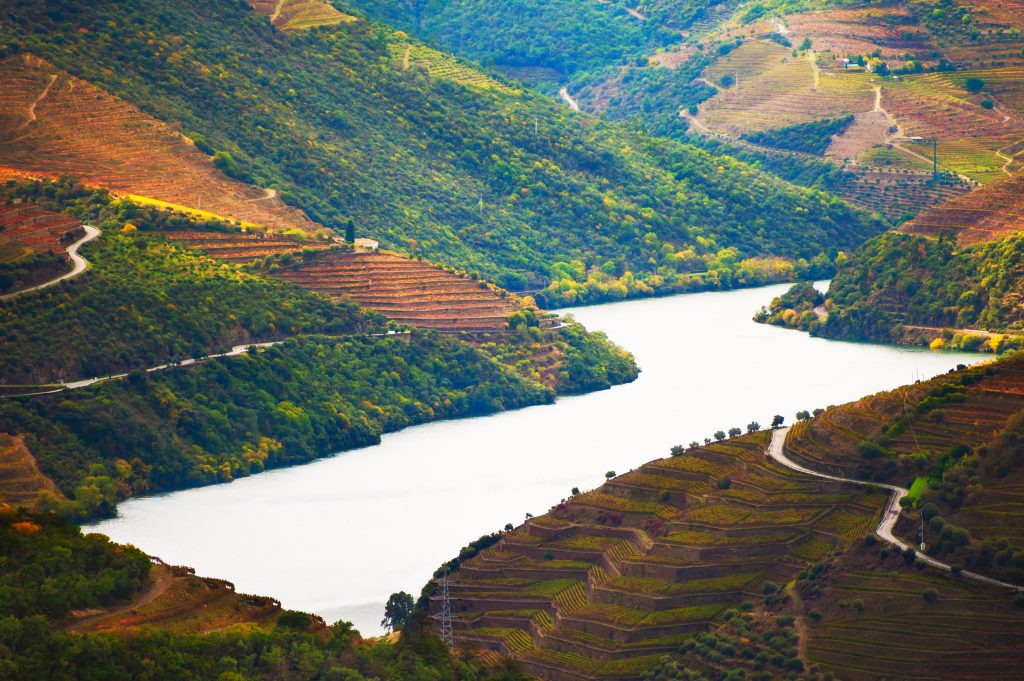
Photo by smallredgirl on Adobe Stock
Autumn brings glorious color to Portugal brought by the bountiful harvest. The Portugal weather in October is warm and pleasant, averaging around 22 degrees Celsius, though it has higher than usual humidity rates. Nevertheless, the temperatures are still more manageable for outdoor activities compared to summer. This month also brings more rainfall and less predictable weather, especially in the north.
November is officially the start of the rainy season in the country. The overall weather in Portugal in November is moderate with mild temperatures of 18 degrees. However, the north and west coast experiences cooler winds and higher chances of rain showers. Meanwhile, the southern areas of the country still get plenty of sunshine.
Festivals and Things to do in Autumn
Taking in the beautiful displays of fall foliage is one of the top things to do in Portugal during this season. During these months you typically find people visiting the historical village of Sintra, which is just outside of the country’s capital. This charming rural village becomes almost magical when gilded with fall colors. Early autumn, with its balmy temperatures, is also a great time to hike.
If you plan to visit Porto, you’ll be glad to know that the Porto weather has moderate temperatures that are ideal for shopping during the day and wine tasting in the evening. And while the average temperature dips in the northern and central areas, the Southern Portugal climate is still warm enough for swimming. The festivals to include on your itinerary of things to do in Portugal in autumn are the following:
Feira de Outubro — Residents of Vila Franca de Xira celebrate the 300-year-old tradition of Portuguese bullfighting and bull-running in the first two weeks of October.
Festa dos Descobrimentos — Late October to early November sees the town of Lagos in southern Portugal celebrate the country’s maritime past with processions and locals dressing up in period costumes.
National Horse Fair — A ten-day celebration in early to mid-November that showcases the magnificent Lusitanian thoroughbred horses.
Lisbon and Sintra Film Festival — One of the country’s main film festivals held mid-to-late November, which attracts famous filmmakers and actors from all over the country.
Winter in Portugal
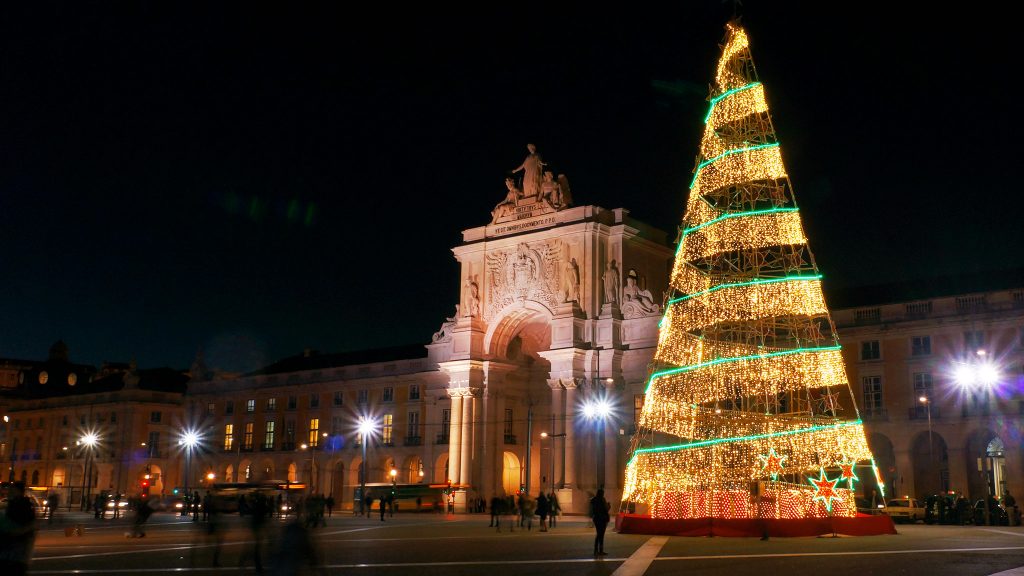
Photo by We Love Lisbon on Flickr
Portugal winter means fewer sunny days. Being the wettest of the year, the weather in Portugal in December brings in cool and windy temperatures of 8 to 15 degrees, with lots of rain. Though compared to other parts of Europe, the country still experiences relatively more sun and warmer temperatures. January and March usher in even colder temperatures, especially in the inland areas where it can dip to 5 degrees. The country does experience snowfall, albeit a light dusting of snow to the country’s mountainous center-north regions. Meanwhile, southern parts of Portugal see more sunshine and warmer temperatures than in the north.
Festivals and Things to do in Winter
Since Portugal experiences less snowfall in winter than other countries in the Iberian Peninsula, it’s one of the top warm winter destinations in Europe. Those who want to escape the chilling winters, head over to Madeira, where it’s always warm all year round. The city also hosts all sorts of holiday festivities. Among the top are nativity scenes all around the island and a stunning fireworks display during the New Year. On the other hand, if you are looking for a winter getaway within the country, head over to Serra da Estrela, where you’ll find the country’s one true ski resort. Moreover, you’ll also see a slew of holiday festivities take place when you visit Portugal in December.
Christmas and New Year — From late December to early January, watch as the festive light displays for the holiday season bring merriment to the country. Add Christmas shopping to your list of things to do in Lisbon and ring in the New Year on the island of Madeira.
Carnaval — The biggest festival of the year throughout the country takes place in early February, which features vibrant costumes and elaborate parades.
Tourist Seasons in Portugal
Regardless of whether you’re traveling to Portugal from US territories or other parts of the world, knowing the different tourist seasons is crucial. If you want to avoid crowded places, overpriced accommodations, and airfare, it’s best to avoid the peak season. Visiting during the low season, however, means fewer activities and accommodations, since most lodgings are closed. Like most destinations, Portugal has its high, low, and shoulder seasons. Here’s everything you need to know about their pros and cons.
High Season
Summer, especially during the months of July and August, is the peak season in Portugal. As the warmest months of the year, it draws locals and tourists alike to the sunny beaches and coastal areas. That goes without saying that it is also the best time of year to visit Portugal for sunseekers. The beach towns along the Algarve coast are packed with vacationers. If you plan to brave the crowds during the summer, avoid the sky-high rates by booking accommodations in advance.
Shoulder Seasons
From late April to early June, as well as from September to mid-October mark Portugal’s shoulder seasons. Spring and fall offer travelers the best of both worlds of fewer crowds and pleasant weather. Popular places to visit in Portugal during spring and fall are still quite lively. During these two seasons, you will find local golf enthusiasts hitting the courses in the Algarve. The still sunny yet cool temperatures are also the perfect time to enjoy the slew of music festivals. Moreover, you can also find lower airfares and room rates during these seasons compared to the peak season. However, options are sometimes limited, depending on where you’re staying.
Low Season
Late October to early March is the best time to visit Portugal for those on a budget since these months are considered the low season. With the exception of the holiday season in late December and early January, these months are the most cost-effective. The low season months are also characterized by shorter days and lower temperatures with higher chances of rain. This also signals the start of a hiatus for many resorts and beach lodgings. Popular attractions and tourist sites keep shorter hours during winter, especially in smaller towns.
Discover the Beauty of Portugal No Matter the Season
There isn’t a bad time to visit Portugal. After all, the beautiful country experiences a great climate all throughout the year. It truly depends on what you want to see and do, as well as how much you want to spend. Nevertheless, it’s still important to know the weather Portugal will experience during your stay.
It is always a great idea to plan your activities around the weather. Summer months are perfect for tourists who want to experience the beauty of Portugal’s beaches. Meanwhile, the frequent rain showers and lower temperatures of winter offer the best deals for travelers on a budget. If you want the best of both worlds — affordable rates and pleasant weather — spring and fall are your best bets. These two seasons are the ideal time to visit if you want to explore the best places to visit in Portugal.

